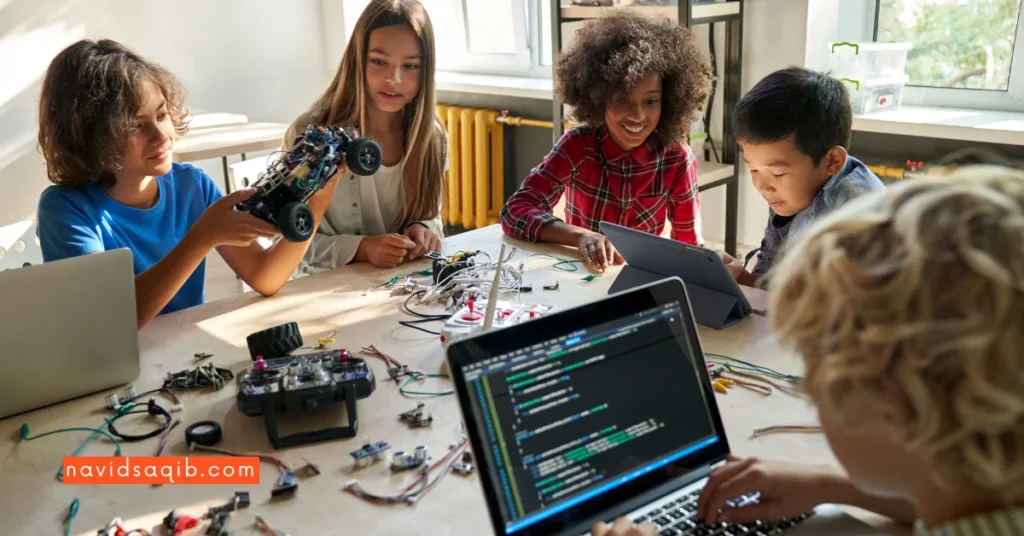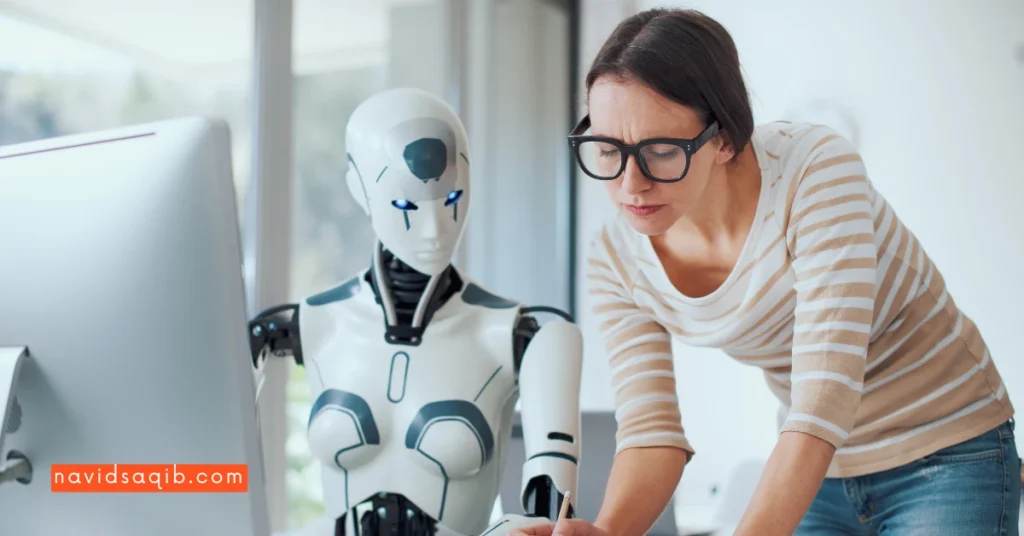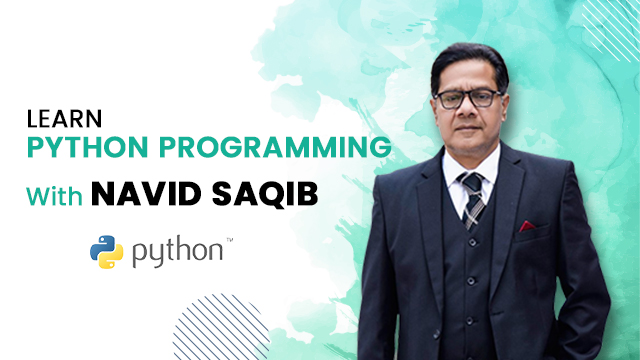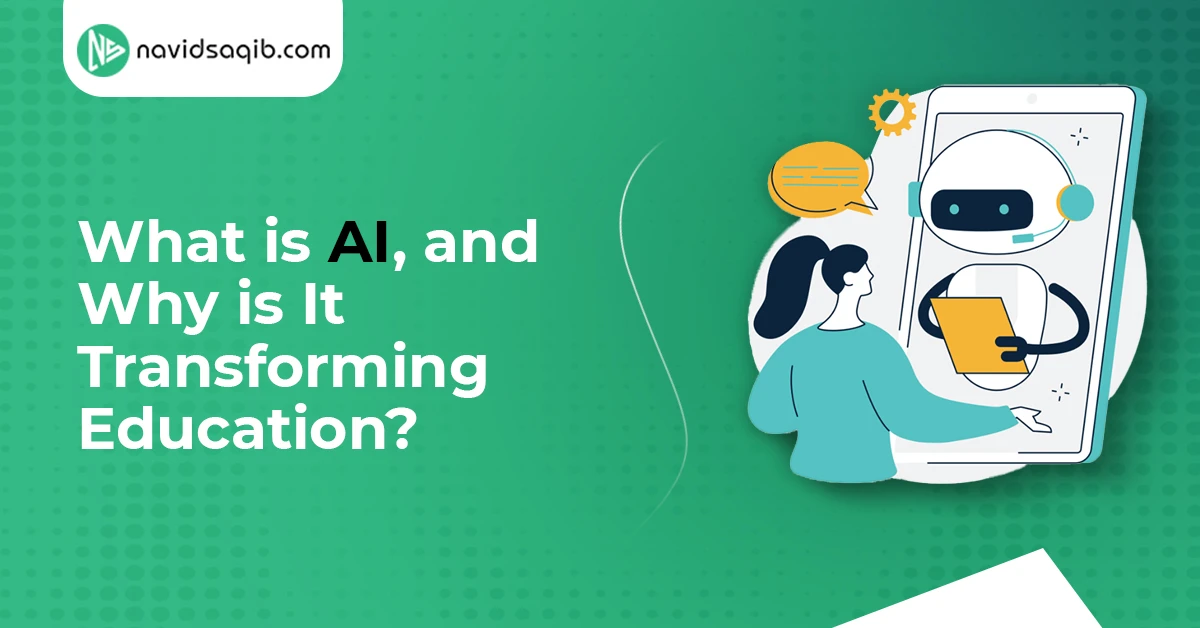In today’s fast fast-growing tech world, AI for students in education is influencing traditional learning. It combines practicality and innovation. It’s changing the learning world like never before. We can transform conventional classrooms by acknowledging the potential of Artificial Intelligence (AI), modern learning platforms, and adaptive tools.
we can make them the intersections of personalized teaching and AI-powered learning. This AI transformation creates innovative education using advanced AI tools for students. It enhances student engagement and learning efficiency.
AI applications in education are wide. It sparks creativity and offers ways to explore today’s learning innovations. It’s redefining the new opportunity and unlocking unlimited AI benefits in academic growth.
Future of AI in Education for Students
We, as students, should be excited about AI in education. These tools are transforming old ways of learning. Classrooms are becoming workspaces. Teachers must not only teach but also make it fun for students with AR/VR.
With this technique, learning becomes more efficient and memorable. AI tools are enhancing learning, especially gamified learning. It turns simple lessons into interactive games. They motivate and engage me as a student.
What Are the Core Applications of AI for Students in Education?
When we talk about the effect of AI on students in education, adaptive learning is the most stimulating area. AI algorithms power most intelligent systems. They can create a specific path for each student according to their performance. In this way, they make personalized learning possible in real life.

The most demanded AI tools including DreamBox and Khan Academy are using AI-based content delivery. They are utilizing AI-based content delivery in real-time lessons. They can ensure that students get enough attention to progress.
This shift from traditional learning to student-centered education is a game changer. It can offer tailored learning experiences that meet individual needs.
How Do Adaptive Learning Platforms Support Personalized Education?
The most fascinating effect is that adaptive AI tracks engagement and provides feedback. These feathers help to keep the learning process responsive and more diverse. As an old-school student, I see this software helps students. It helps them find gaps in their learning. They now understand these gaps with depth and precision.
These platforms are transforming custom education. They aim to make work flexible and accessible. This can empower students. It’s not just the tech in education. It’s also unlocking new ways to help students grow. We’ve never seen this before.
What Role Do Intelligent Tutoring Systems Play in Education?
In today’s evolving tech world, AI for students in education is widely used. The influence of intelligent tutoring systems is that it provides real-time support for learners. AI learning platforms like Carnegie Learning and Squirrel AI are enhancing traditional learning.
They are leading the way. They provide efficient personalized coaching. As a student, I admit that automated tutoring is revolutionizing traditional learning. These tools can provide real-time feedback.
They have helped me a lot tracking my progress and its improvement. It’s like if I have an AI mentor by my side, I can easily get individualized support for everything I need. Education systems are now tailored due to the rise of interactive AI. They aim to boost student performance with AI coaching.
How Are AI-Powered Study tools Revolutionizing Study Habits?
I have seen how AI study assistants are changing learning. AI tools like Quizlet AI and Socratic by Google are not just helping with homework. They also offer AI study tools to make studying more effective and precise.
These AI learning assistants are vital for smart studying. They combine with digital learning aids. These tools should be at the fingertip of the student to master the learning concepts. This smart studying lets learners automate tasks in an organized way. It boosts their focus.
I recommend them. AI productivity tools are a game changer in education. They are making it easy for the student to develop good study habits. This will make them struggle to work hard to be on top of their assignments. This is all possible due to virtual assistants. They should be in our routines to optimize learning and accessibility.
List of 24 Best AI Tools for Students
AI tools help students improve their studies and productivity. Tools like QuillBot for paraphrasing, Grammarly for grammar checking, and Wolfram Alpha for problem-solving assist in various academic tasks. Duolingo helps with language learning, while ChatGPT offers quick answers and explanations. These tools enhance learning, save time, and improve academic performance.
- QuillBot: A paraphrasing tool to help students improve writing clarity and structure.
- ChatGPT: An AI chatbot for answering academic questions and generating content.
- Grammarly: A writing assistant to improve grammar, punctuation, and clarity in essays.
- Otter.ai: AI-powered transcription tool to convert spoken lectures into text.
- Canva: Easy-to-use design tool for creating presentations, posters, and graphics.
- Gradescope: An AI-driven platform for grading assignments and exams efficiently.
- Magic School: An AI tutor for personalized learning experiences and education insights.
- Brainly: A peer-to-peer homework help app where students can ask and answer questions.
- Duolingo: Language learning app that uses AI to personalize lessons and track progress.
- Fireflies.AI Corp.: AI tool for transcribing meetings and summarizing key points.
- Intelligent Tutoring: AI-driven tutoring system offering customized learning plans and assessments.
- OpenAI: A research organization offering various tools, including GPT models, for academic assistance.
- Audio: AI tool that helps students create and manage audio content for projects.
- Education Copilot: An AI assistant to guide students in managing their studies and assignments.
- Generative AI: AI tools designed to generate new, contextually relevant academic content.
- Google Gemini: Google’s AI platform for smart research and knowledge discovery in academia.
- TeachAid: AI-driven learning resource tool for improving educational outcomes.
- Turnitin: A plagiarism detection tool used to ensure originality in student work.
- Wolfram Alpha: Computational knowledge engine for solving math problems and answering questions.
- Cognii: AI platform offering assessments and feedback for educational content.
- Curipod: AI-powered tool for creating interactive lessons and activities.
- Diffit: A tool for comparing academic texts to identify differences and similarities.
- ElevenLabs: AI tool that generates natural-sounding audio from text for lectures or podcasts.
- Copyscape: A plagiarism checker to ensure student work is original and properly cited.
How Does AI Enhance Classroom and Online Learning?
AI-powered virtual classrooms are changing how we view classrooms and online education. A student who can use platforms like Google Classroom and Blackboard can see the enormous benefits of AI integration.
These virtual learning tools are lively classrooms. They make it easy for learners to find resources and join discussions. They make it possible for them to collaborate with their classmates even if they are not in the same place. Oddly, these AI platforms promote collaborative learning in a personalized, adaptive space.
If you want to join the lecture or attend group tasks, AI virtual teaching is shaping the future of distance education.
What Are AI-Powered Virtual Classrooms, and How Do They Work?
AI-powered virtual classrooms use online tools to engage learners. They provide interactive, personalized learning experiences. I have found that AI can help in two ways. It can monitor student participation and track their progress toward study goals. It can also provide real-time feedback. This can make learning more efficient and effective in both remote and traditional education.
If we can navigate digital classrooms, these tools can boost our learning. They will connect all students and teachers in the process. AI integrations make possible advanced education. Virtual classrooms are proving to the smart, more flexible, learning environments.
How Do Educational Chatbots Facilitate Communication?
In my student life till now I have found that educational chatbots like the Duolingo Chatbot and IBM Watson are incredible. They are helping students communicate better, both inside and outside the classroom. AI chatbots are acting as learning assistants. They provide quick, real-time answers to satisfy students’ curiosity and boost their engagement.
The virtual communication tools provide personalized support. In this way, they are helping me to make my engagement during my learning journey. Chatbots, powered by conversational AI, boost student-teacher interaction. Their seamless assistance enhances the overall learning experience.
How Does AI Help Students With Special Needs?
AI offers assistive technology for special students’ needs to make a difference effectively and truly. Tools like Microsoft Seeing AI and Otter.ai help students with classroom challenges. They provide useful accessibility features. As a student, I can witness the AI for disabilities work. It is effective. These tools provide personalized support and inclusive learning.
Developers design speech-to-text tools and other assistive learning tools specifically to help students who need specific assistance. They make it easy to engage and succeed in learning.
Thanks to these AI advancements nowadays inclusive education is more effective and easy to achieve. AI is making special education tech more accessible. It’s unlocking new, effective educational possibilities.
How Does AI Improve Assessment and Feedback for Students?
AI is changing assessment handling in traditional ways. It makes the process faster and more efficient both for the teachers and students. AI tools, like Gradescope and Turnitin, are offering AI grading tools. They measure and evaluate grades accurately and quickly. To me, this is incredibly wonderful in keeping my performance in the classroom and with progress.
The AI assessment software saves time. It lets the teacher focus on the feedback’s meaning. The system handles the repetitive tasks of learning. An automatic grading system by the AI not only enhances assessment optimization with consistency. It also ensures that each assignment is marked and graded fairly. AI evaluation’s ability to simplify exam assessment is amazing, with individual involvement.
How Does Automated Grading Work?
What makes me impressed and stands out about these tools, is that they are helping to improve the feedback. They allow personalized insights to empower us and find areas that need improvement and growth. With digital grading and feedback automation, students, including me, can get comments faster. It helps us to understand where we can improve ourselves to grow successfully.
AI in exams is not just about the grades and assessments, it unlocks the doors to new and exciting opportunities. It connects students and technology to evaluate performance. It will revolutionize tests and assignments. It makes education smart and efficient with engagement.
How Does AI Provide Insights Through Learning Analytics?
As a student, I appreciate that AI tools can show me my academic progress. These tools such as engagement metrics and student performance tracking deliver data-driven insights. It helps students find their strengths and fix their weaknesses to improve.
AI analytics can turn raw data into insights. They can guide educators and learners to take actions that improve weak areas. Its empowerment with performance monitoring and progress analysis can track the growth progress. It also suggests adjustments for improvement.
AI’s academic tracking can improve grades. It can show AI’s potential for student growth. It can create a more efficient, personalized learning experience.
How Does AI Prevent Plagiarism and Foster Originality?
As a student, I always rely on AI tools, like Grammarly and Copyleaks. They help ensure my work is original and polished. These plagiarism tools use advanced AI to check my work for originality. They ensure my submissions are correct and authentic.
I can stay confident by submitting my tasks with the help of these tools. These AI tools check for originality and verify content. They uphold academic integrity without worrying about accidental errors.
I have found that these anti-plagiarism tools are more than just error detectors. They are the foundation of confident students’ careers. They can be used as originality enhancers to help me in my writing improvement. These new AI features, like content checks, harness us to create work that reflects our unique ideas. They are based on our credibility and abilities.
What Are the Challenges and Ethical Considerations of AI in Education?
AI has greatly transformed education. Its benefits also bring challenges, especially to student privacy and data security. I use AI-driven platforms daily. I see how they handle personal information.

ethical AI practices are vital when we talk about AI data handling and GDPR. ensuring these practices will make learning goals are aligned with standards like GDPR.
What Are the Privacy Concerns Related to AI Use in Education?
As AI tools improve learning, the need for secure platforms and strong privacy policies is urgent. This is about building trust in the strong relationship among students, educators, and tech providers.
Privacy-first education is key. It must focus on the AI’s duty to protect sensitive info. If we adopt ethical standards and safe learning spaces, we can ensure AI tools aren’t harmful. They will not compromise our rights. We must use ethical tools to protect privacy and boost education.
How Do Biases in AI Impact Student Learning?
AI ethics can reduce bias in AI. It can ensure fair evaluations through effective learning. The importance of algorithmic fairness in educational tools is making a huge difference. It promotes equity in learning and controlling systemic issues. I appreciate that developers now create many inclusive tools. They reflect our diverse representation. This can make sure all students are given the same attention and support.
By prioritizing AI fairness and using unbiased AI tools, we can achieve fairness in education. We can create an environment where everyone has equal chances to succeed in tech.
How Do Educators Balance AI and Traditional Learning Methods?
Educators are finding ways to improve AI collaboration in classrooms. They want to shift from traditional teaching methods to more efficient learning. Teachers are utilizing technology in teaching in a hybrid education model. They are using this model to enhance their teaching but not with the intention of their replacement.
A teacher-technology synergy supports the learning and growth of learners. AI-human collaboration and blended learning will create a more balanced education. This education system is where teacher roles are not sided but central. AI is using it as a powerful tool for personalized learning in the modern learning world.
Educators can transform hybrid classrooms into peaceful spaces. They can do this by embracing AI in tech-enhanced teaching. It will allow both traditional and innovative learning to thrive.
What Innovations Are Expected in AI-Driven Education Tools?
The emerging tools, including innovative and future technologies, aim to improve educational materials. Top AI tools, like immersive AI and futuristic AI learning, are starting a new era of education. They are cutting-edge. This evolved era offers AR/VR trends and AI advances. They are redefining opportunities for students worldwide.
How Will AI Shape the Student Learning Experience by 2030?
By 2030, I can assure you that AI-driven ecosystems will completely change the way we learn. They will create tech-forward classrooms to tailor each student’s specific needs. The future trends in AI are making the educational process a new way for next-gen learning. In this transformative tools will be used to make the lessons impactful. AI will bridge the global gap in access to educational resources.
This is the evolving AI era. It can offer today’s students a visionary education. It will prioritize creativity, adaptability, and student growth. As we look to education in 2030, I’m excited. AI will transform learning and reshape our journey.
Conclusion
Now, I’m wrapping the base of my articles with the admitting of the potential of AI for students in education. This AI revolution is transforming education. It is making it innovative with new learning tools that ensure student success.
They are reshaping the learning futures with AI advancements. By prioritizing ethics, we can create a balance. It will improve technology and human-centered education. The benefits are countless, as this article shows. But, we are just seeing the beginning of them.
AI in education holds great promise for better, personalized learning. These AI takeaways refer to the evolving tech trends. They exist because balanced technology is key. It achieves transformative insights for education.
Lastly, please share your thoughts on how AI can improve our learning. Share your ideas with me about the future of education now!
FAQs
How does AI help students in education?
AI helps the student. It personalized learning, boosts engagement, and streamlines the process with feedback.
What are the best AI tools for students in education?
The best AI tools for students are Khan Academy, Grammarly, Quizlet AI, and Google Classroom.
How is AI used to support students with disabilities?
AI tools, like Seeing AI and Otter.ai, are now useful. They offer features like speech-to-text and visual assistance. To help disabled students in the learning process.
What are the challenges of using AI in education?
The top challenges of AI in education are data privacy, algorithm bias, and overtrust in technology.
Will AI replace teachers in the future?
No, AI will not replace teachers. It will assist them. It will handle repetitive tasks and save teachers time. They can then focus on providing quality education.
Read


